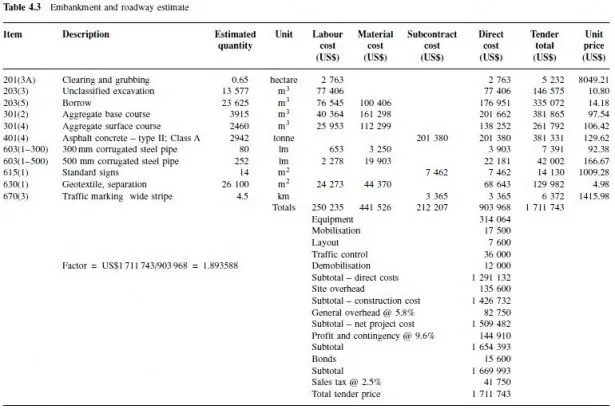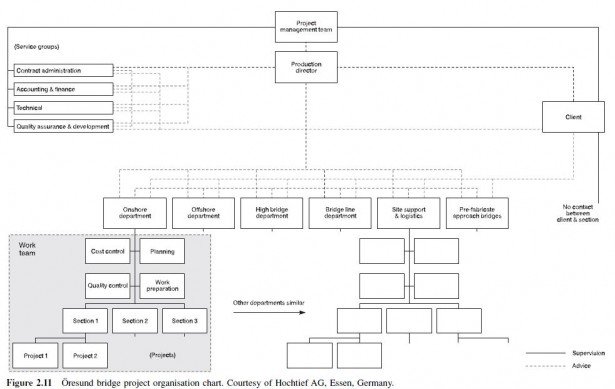In preparing its proposal, the contractor will need to develop a preliminary project schedule. This schedule is not to be confused with the detailed schedule that will be prepared after the job is awarded. This later effort, described in Chapters 5 and 6, is used both for in-depth planning of the multitude of individual project activities and for the control of the schedule as the project proceeds. Instead, the preliminary schedule breaks the project into relatively few broad activities, to provide essential information to those assembling the contractors cost estimate.
Beyond the occasional owner-imposed requirement that such a schedule be submitted with the proposal, the contractor needs this preliminary timetable for it own reasons. First, the tender documents often specify a project completion date or total project duration and the tenderer needs a rough idea of whether this requirement can be accomplished. Also, many project overhead costs, such as supervision, the project office and site security, vary directly with project duration; thus an estimate of that duration is essential if these costs are to be assessed. Furthermore, the time during which various pieces of equipment are needed must be approximated, in order to include these costs in the proposal. In addition, there are issues regarding the sequencing of operations and their seasonal impacts. For example, will concrete placement occur during severe winter weather? If so, the costs of extra protection and lowered productivity must be incorporated. Another example might be the additional costs of overtime labour or multiple shift operations during certain portions of the schedule (Clough et al., 2000). Finally, it is likely the contractor will have to provide its own financial resources early in the project, until payments for partial completion are received from the owner. The cost of this financing, which must be part of the cost estimate, will be proportional to those early activity levels as identified on the preliminary schedule.
Figure 4.3 is a hypothetical example of a preliminary project schedule, in bar chart form, that can assist the cost estimator in confronting some of the issues described in the previous paragraph. Note that the breakdown is truly broad-brush, consisting of only 11 activities. Nonetheless, from it we learn several things: (1) the projects fieldwork is expected to last a total of 5 months, (2) cast-in-place concrete work will take place from late October through mid- November, necessitating cold weather protection if the project is located high in the northern or low in the southern latitudes and (3) heavy lifting equipment will be needed for structural erection between early November and mid-December and, perhaps, for mechanical system installation intermittently during December and January. In Chapter 5, we shall have further occasion to consider project scheduling, in considerably more detail.

